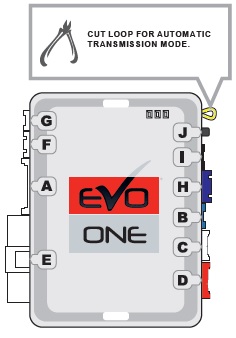Download as PDF
How To Save as PDF
- Press Ctrl+P
- Click the dropdown arrow beneath Printer
- Click Microsoft Print to PDF
- Click Print and Save to a directory of your choice

DOC.#

DOC.#
TIP SHEETB-4721-4542014 Toyota TUNDRAG-Key
Thank you for purchasing your remote start from MyPushcart.com - an industry leader in providing remote starts to do-it-yourself installers since 1999. The purpose of this tip sheet is to help you organize your installation. If you are having difficulties please contact our Technical Support Department by clicking here https://mypushcart.com/helpme/ OR PHONE: (520) 572-2220 M-F 9-5 ARIZONA time.
Help us help you:
 The best way to get support the soonest is to open an online ticket. Phone calls are always welcome. The phones are answered by receptionists who can take your information and create the same ticket you can create using the link above. Tickets are handled in the order in which they are received. THANK YOU
The best way to get support the soonest is to open an online ticket. Phone calls are always welcome. The phones are answered by receptionists who can take your information and create the same ticket you can create using the link above. Tickets are handled in the order in which they are received. THANK YOU
Disclaimer
Neither the manufacturer nor the distributor of these components are responsible for damages of any kind either indirectly or directly caused by the components, except for the replacement of the components in case of manufacturing defects. This guide is subject to change without notice. Refresh your browser cache or use different browser (Edge, Chrome, Firefox, etc.) to view the latest update.
Only compatible with automatic transmission vehicles manufactured for sale in the US and Canada.
A few very important things before you get started:
Read the entire tip sheet. There are several safety tips there that you need to know before you start.
Avoid using a test light to probe wires. Test lights can set off airbags if you probe the wrong wire. Your vehicle wiring chart will identify the correct wires that you’ll be tapping on to in your car. If you must probe, use a digital multi-meter. They’re inexpensive and won’t set off airbags.
REMOTE START ACTIVATION

Overview
There are 5 basic steps to this remote start installation:
1. Preparation
2. Wiring
3. Programming
4. Testing the system
5. Finishing up!
STEP 1: Preparation
Beginning the Installation:
Tip #1 – Where Everything Goes
• When you open up your remote start, you’re going to see a whole bunch of wires. Don’t be intimidated – you’re only going to be using a few of them. The remote starters are designed with wiring options for a variety of cars and no car is going to use all of them. The wire charts and system wiring diagram will show you the wires that you’re going to need and where they connect in your vehicle. Any wires that are not shown to connect in this guide will not need to be connected.
• Remote start and bypass modules – Before you start wiring, look for a location where there’s some open space that will fit the modules. Pay attention to moving parts like the pedals, e-brake and steering column. Be sure to route your wiring away from those areas. Carefully remove the lower knee bolster, plastic steering column shroud, and any other panels required to gain access to the needed vehicle plugs. Remember the order that you remove the panels. It is best to route your wires along with the vehicles factory wires, as this is typically a safe location and it keeps the install neat. Once you have accessed the needed locations in the vehicle use the plugs, pin positions in the plugs, and wire colors shown in this guide to identify the correct wires that you will need to connect from the remote starter to the vehicle. In most cases, the wires on the remote start are way longer than needed. Trim off the excess wire when you make your connections, but leave some slack, this will allow you some flexibility when it comes time to stow the remote start after the installation is completed.
Prep the Evo-One
The yellow wire loop needs to be cut in order for the remote start to work on a vehicle with automatic transmission. We have done this for you prior to shipping.

WHERE TO FIND YOUR WIRES

STEP 2: Wiring
Wiring Diagram



STEP 3: Programming
Programming the EVO-ONE Module
Your EVO-ONE module now needs to be paired to your vehicle.
*NOTE: For Honda vehicles with the yellow fuse box note, first plug all connectors into the EVO-ONE and make sure vehicle can be manually started. After confirmation, then disconnect EVO-ONE and proceed with module program procedure.
Before starting the programming sequence, make sure that none of the connectors are plugged into the EVO-ONE.
IMPORTANT - Timing is critical for programming steps 1 and 2. After you press and hold the program button and then plug in the 6-pin main connector, the LEDs on the EVO-ONE will start to flash in sequence and will continue to cycle until you release the button. Release the program button when the RED and BLUE LEDs are BOTH lit together. If you release the button and a different LED is lit, unplug the main connector and start over.


STEP 4: Testing the system
Once all wiring and programming are done, you should test the system to make sure everything is working properly before you close up the installation.

1. With the key removed from the ignition, press the lock button on the vehicle factory remote three times in succession. Timing is important! Pressing the lock button too fast or too slow will not activate the system. The presses should be about 1 second apart.
If everything has been installed and programmed correctly, a few seconds later the gauges will power up and the parking lights (if connected) will flash, and a few more seconds later the vehicle will start.
2. Make sure the vehicle stays running, and that the climate controls are working.
The engine will remain running for the programmed run time or until the brake pedal is pressed. If your factory remote stays operational while the vehicle is running (on some vehicles it does not), the engine can be turned off by pressing lock 3 more times on your factory remote.
3. If your test was unsuccessful, go back and re-check your wiring and programming. If you used T- Taps, make sure they are all attached correctly. Poorly made T-Tap connections are the #1 cause for tech support calls. Also, remember that T-Taps should never be used on data connections. Depending on the vehicle, those connections could be labeled Data, Can Hi, Can Low, IMMO, IMI, RX, TX or Passlock.
STEP 5: Finishing up!
After confirming that everything works properly, cap off or tape the ends of any wires you’re not using to avoid grounding or other contacts.
• Now gather up all the wiring and neatly bundle it together using zip ties or electrical tape to prevent the wires from interfering with any of the moving parts under the dash.
• Test the system often when you are putting your vehicle back together.
• Find a secure place to put the remote start module and use zip ties to secure it. Be careful not to zip tie near your connections as it may create a bad connection.
• Replace any interior vehicle panels that were removed to gain access to the needed wires, in reverse order that they were removed.
• Test the system as you reinstall the panels in your vehicle to make sure you do not pull something loose or pinch a wire. Be careful not to run a screw through a wire or pinch a wire while reinstalling panels.
KEY TAKEOVER
Copyright 2025 Digitel LLC